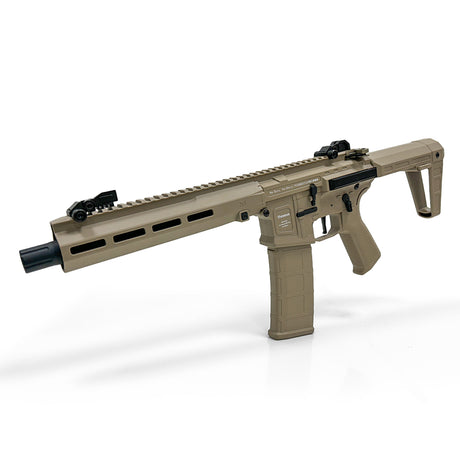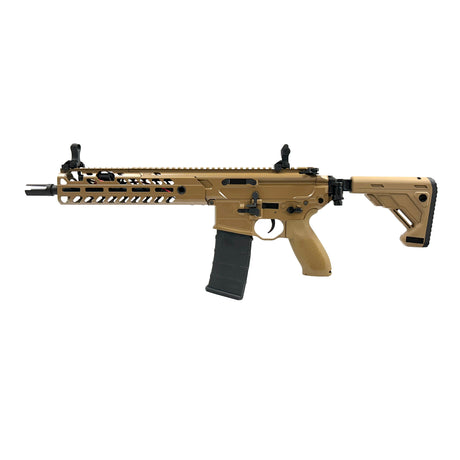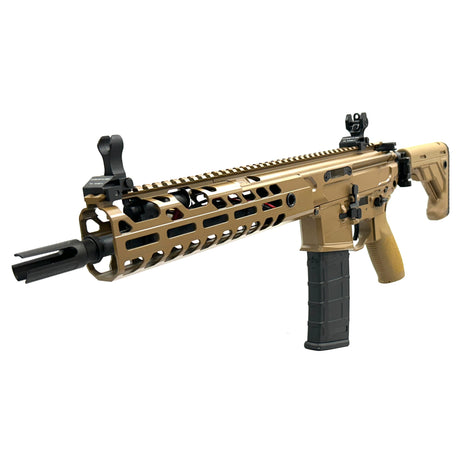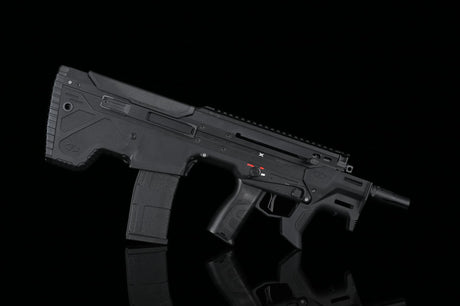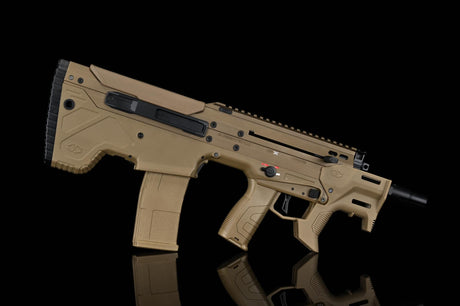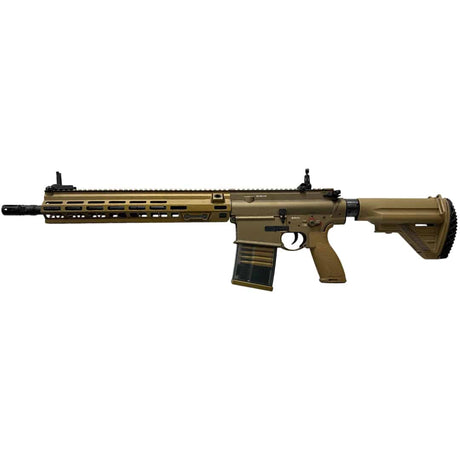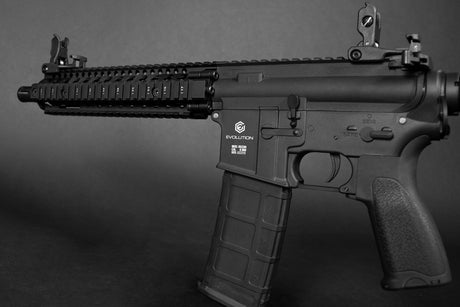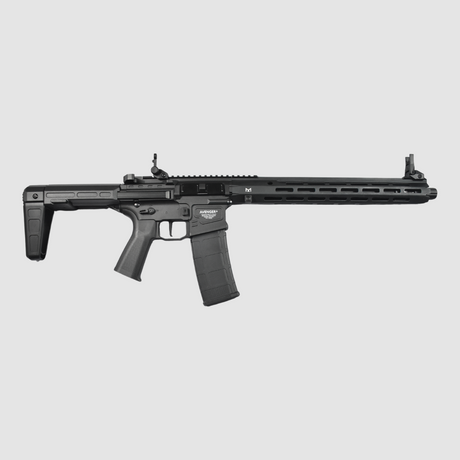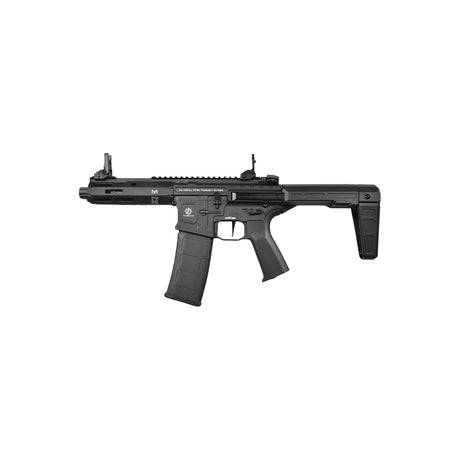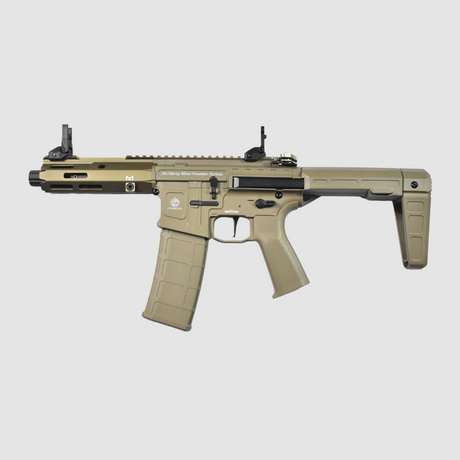As many of you know, recent updates with the PCA 2017 have been going through this year. An email has just been released from UKARA with the below information regarding the changes.
The following brief has been commissioned by UKARA for themselves and UKAPU, who have engaged individuals working in the UK Firearms licensing arena. This work has taken place in consultation with the Home Office.
Date: 2017/04/27
Airsoft and the Policing & Crime Act 2017 How does the Act affect airsoft?
From the 2nd May 2017 the Act introduces an exception from the classification for airsoft guns as firearms, so long as they meet certain criteria. This means that airsoft guns (and it doesn’t matter how they are powered) are not firearms if they are designed to fire a spherical plastic missile that is no bigger than 8mm in diameter and they have a muzzle energy that is no greater than 1.3 joules if they can fire successive shots (often called “full auto”) or 2.5 joules if they can only fire individual shots (meaning either “single shot” or “semi- auto”).
-
Isn’t that already the case though?
No. Previously we have had to rely solely on guidance agreed with the Home Office, the police service and the prosecution authorities that has had a similar effect, but this agreement was not law. Airsoft will now have a specific exception that can be relied on if a criminal investigation was to take place.
-
Does it really matter?
Yes, it is a significant achievement for the sport/discipline, and good recognition of us by government. If airsoft guns were to be classified as firearms then there would be considerable uncertainty as to how the sport could be conducted. At the very least there would be higher age limits, registration of retailers as firearms dealers, face to face (not postal) retail sales and there may have been prohibition of certain types of airsoft gun (see below). To avoid these changes we would most likely have had to accept lower site limits than are commonly used at the moment.
-
How were the muzzle energy thresholds arrived at, and what do they mean in practice?
The two limits were determined through forensic tests some years ago. They represent the muzzle energies at which the tests suggested that a potentially lethal injury could be caused. There are two limits because the tests suggested that successive shots hitting the same point had a cumulative effect. In practice airsoft sites apply limits that leave a margin for even more safety. It is usual to measure the muzzle velocity of a 0.20g BB in order to check whether an airsoft gun is within the site limits. Knowing the velocity and weight of the BB means that the energy can be calculated, but by convention sites usually publish a muzzle velocity limit, knowing what velocity will keep an airsoft gun within the muzzle energy threshold that applies. The common site limit of 350fps with a 0.20g BB equates to 1.14 joules, and 500fps with a 0.20g BB equates to 2.32 joules.
The exception is unlikely to cause sites to have to change their current limits, as it consolidates limits that have been in place for many years voluntarily.
-
How will airsoft guns that exceed the thresholds be categorised?
In short, we still do not know for certain. This is not a new problem for us, as that question has existed since airsoft guns were first introduced to the UK. Although we have been able to discuss this with the Home Office, police and prosecution authorities, we do not know because only a court can decide with certainty, and there have not been any prosecutions that we are aware of (a good thing, even though it leaves the uncertainty!).
The Home Office have published a Circular, number 06/2017, which comments very briefly on the airsoft exception. It includes; 18. Owners of airsoft weapons that meet the definition of an airsoft gun will have to ensure that any modifications made to the weapon do not cause it to no longer meet that definition. This advice is very limited indeed, however it does indicate that the Home Office are aware that airsoft guns can be modified, and might be capable of being modified to exceed the muzzle energy thresholds.
The advice does not say how airsoft guns that exceed the thresholds might be categorised, nor does it advise that all airsoft guns are caught by what are sometimes called the “readily convertible provisions “(see below) as a result. This may be because it remains the case that only a court can decide that, in each case. It seems likely that single shot/semi auto airsoft guns that exceed 2.5 joules muzzle energy would be categorised as “low powered airguns”. This is the category that the vast majority of airguns are in. In Scotland airguns need to be licenced. However, there is far more uncertainty over airsoft guns that can fire successive shots and exceed 1.3 joules muzzle energy. Previous guidance from the Home Office has indicated that such airsoft guns may well be prohibited weapons.
-
Are there now issues for HPA airsoft guns, and those where the mainspring can be changed to exceed the muzzle energy thresholds (which must be most airsoft guns)?
Some of the issues being discussed are often collectively called the “readily convertible provisions”. They are not a new problem, as the provisions feature in the Firearms Act 1982. In short nothing has changed on these questions just because of this Act, and the same uncertainty remains for now (see below). We will continue to press for resolution and certainty, but that may require further changes to the law. Achieving that is very difficult, as securing our new exception has already shown. The further concern for most “off the shelf” HPA and GBB airsoft guns is that the new exception refers to airsoft guns as not being capable of firing any missile above the stated limits. Whilst the discussion we have had about this during the drafting of the law suggest that the provision is intended to apply to the airsoft gun in its current state (without changing components), the flexibility to vary the air/gas pressure so the gun fires above the thresholds (without needing to change any components) may be seen as being too easy for an individual to do, and thus the gun might not be able to benefit from the exception. Whilst this query has been explained, and clarification sought, we do not yet have an answer.
-
Can you briefly explain what the concerns are?
The law states that if an imitation firearm (which would include a RIF) can be converted to be a firearm without specialist tools or knowledge then that imitation firearm is actually a firearm instead. The uncertainty for airsoft is what airsoft guns above the new thresholds are actually to be categorised as (see above). If they are airguns then there is less of a problem because the readily convertible provisions only catch air weapons that can be converted to the “specially dangerous” category (which airsoft guns are unlikely to be strong enough to be capable of) or to the “prohibited weapons” category (in this case those subject to control under s5(1)). This means that if successive fire capable airsoft guns above the 1.3 joule muzzle energy threshold are prohibited weapons (s5(1)(a)) then those below the threshold might be caught as being “readily convertible” to be above it, however so might any toy imitation firearms into which the component parts of an airsoft gun could be fitted.
-
Are imports also affected?
There is no change to the controls on importing airsoft guns which are below the applicable threshold. However, now that clearly defined thresholds are in place, anyone importing an airsoft gun should take extra care that the sender has verified the muzzle energy is below the applicable threshold.
-
What happens now?
Airsoft guns within the criteria will be excepted from the definition of a firearm, giving certainty where we previously did not have it. UKAPU and UKARA will continue to work with the Home Office, police service and prosecution authorities to achieve clarity on the outstanding issues. We will keep you up to date and we hope you will continue to support our efforts to achieve this.




